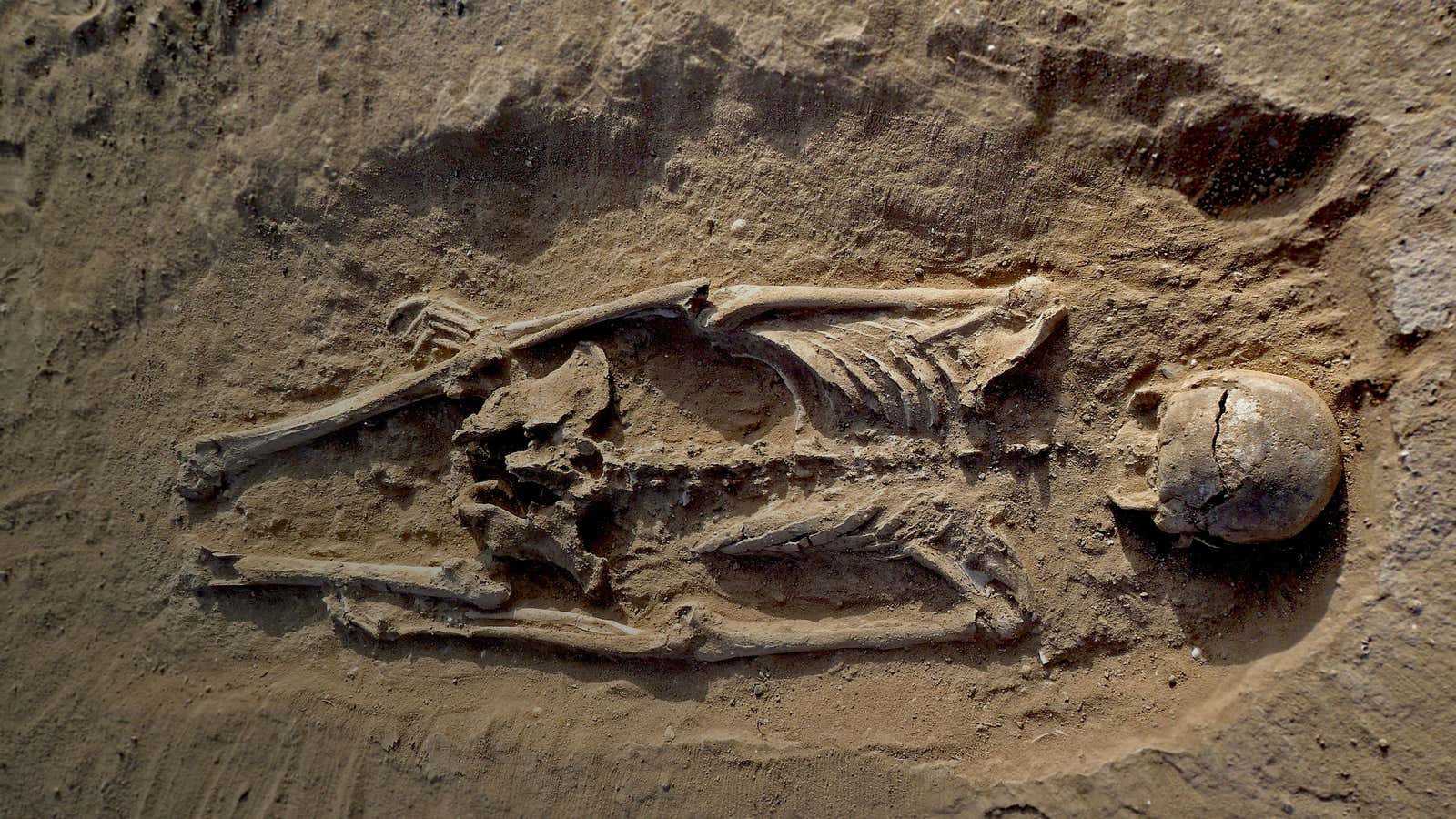Some had their skulls crushed. Others were struck with arrows in their necks and heads. Among those killed was a pregnant woman with her hands and feet bound.
Researchers recently unearthed the 10,000-year-old remains of 27 people near Lake Turkana in northern Kenya and this brutal scene is a controversial find—it may be the oldest evidence of warfare between humans.
The area is now scrubland, but it was once a fertile lakeshore. While large-scale acts of violence were common among settled societies, there had previously been little evidence of warfare in hunter-gatherer societies. Some scientists suggest that as hunters lived a nomadic lifestyle, there was little ownership of land or significant property. As they had fewer possessions to fight over, some experts suggest these societies were relatively peaceful (and possibly egalitarian). Many experts argued that with farming came warfare; humans now wanted to protect their property by whatever means necessary.
The study of the Kenyan massacre, published in Nature, challenges this widely held theory.
Researchers from the University of Cambridge show compelling evidence that the victims, which included children under the age of six, were killed in a single event. Many of the skeletons were found face down; others were found in a position that suggests they were bound, including a woman in the late stages of pregnancy. Researchers also recovered the bones of the nine-month-old fetus.
Researchers speculate that the group may have been attacked by rival hunter-gathers, which were armed with wooden clubs, spears or arrows. The bodies were not buried; instead, they were left to rot.
The study fuels the idea that human warfare is as old as we are. But there’s no need to despair; lead researcher Robert Foley, from the University of Cambridge, suggests so too is altruism. “A lot of what we understand about human evolutionary biology suggests these are two sides of the same coin,” he said in a statement.
